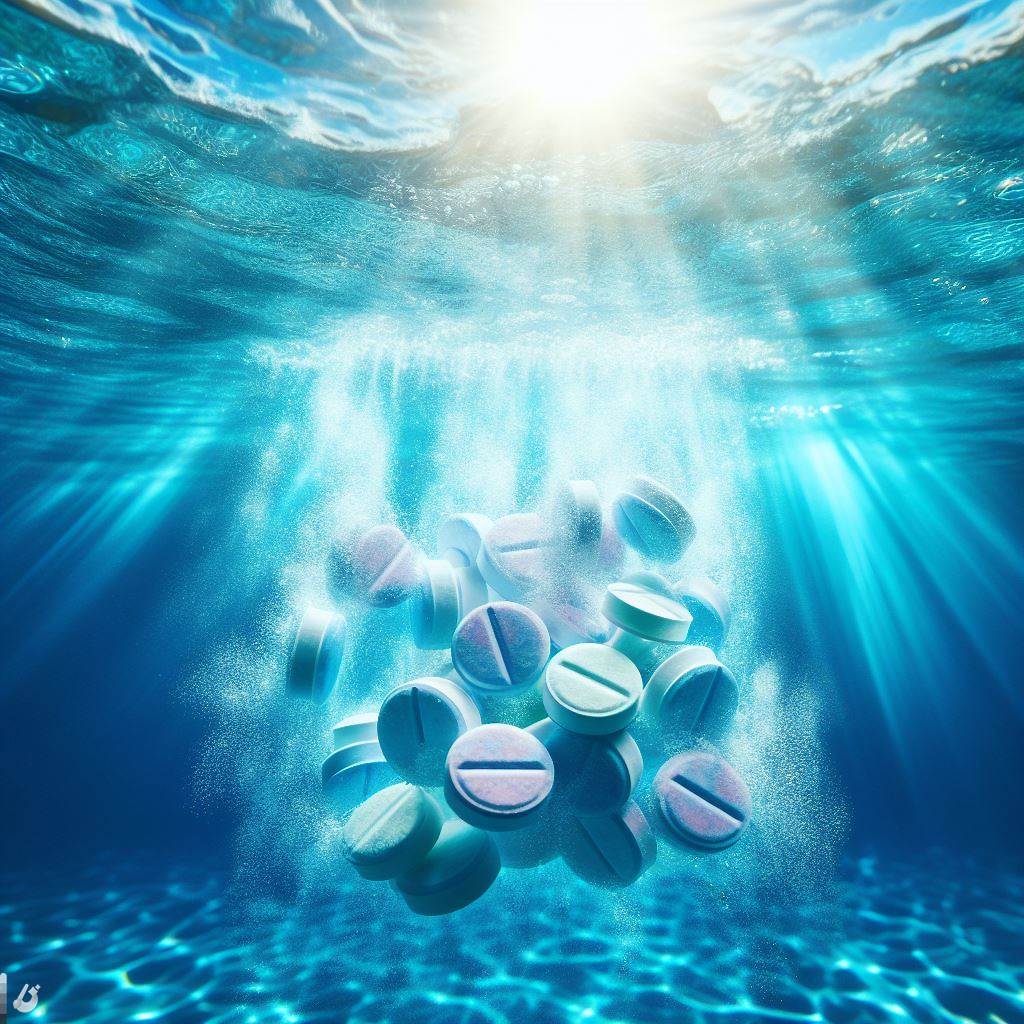Chlorine tablets play a vital role in maintaining water sanitation and clarity in swimming pools. However, when chlorine tablets become damp or moisture-damaged, their effectiveness diminishes, leading to potential challenges in pool maintenance. This article aims to explore various strategies and methods for handling moisture-damaged chlorine tablets in swimming pools, ensuring optimal water quality and safety for swimmers.

Understanding Moisture Damage
Moisture damage occurs when chlorine tablets are exposed to humidity, water splashes, or improper storage conditions. As a result, the tablets absorb moisture, leading to clumping, crumbling, or disintegration. Moisture-damaged chlorine tablets lose their effectiveness and may fail to adequately sanitize pool water, posing challenges for pool maintenance.
Signs of Moisture Damage
Identifying moisture-damaged chlorine tablets is essential for prompt remediation. Common signs of moisture damage include:
- Clumping or sticking together of tablets.
- Softening or crumbling of tablet edges.
- Disintegration or powdering of tablets.
- Change in color or texture, indicating chemical breakdown.
Handling Moisture-Damaged Chlorine Tablets
When moisture damage is detected in chlorine tablets, it’s important to take appropriate steps to address the issue effectively. The following strategies can help manage moisture-damaged chlorine tablets in swimming pools:
a. Removal from Use:
Immediately remove moisture-damaged chlorine tablets from use to prevent further deterioration and minimize potential adverse effects on water quality.
b. Evaluation of Damage:
Assess the extent of moisture damage by examining the appearance, texture, and integrity of the tablets. Determine whether the tablets are salvageable or require disposal.
c. Separation and Segregation:
Segregate moisture-damaged chlorine tablets from unaffected ones to prevent cross-contamination. Store them separately in a designated container or area away from dry, unaffected tablets.
d. Proper Disposal:
If moisture damage is extensive and renders the tablets unusable, dispose of them properly according to local regulations and guidelines for hazardous waste disposal. Avoid flushing damaged tablets down drains or disposing of them in regular household waste.
e. Salvage and Reuse:
In cases where moisture damage is minimal and tablets are salvageable, consider drying them out for potential reuse. Spread the damaged tablets on a clean, dry surface in a well-ventilated area away from direct sunlight. Allow them to air dry completely, periodically turning them over to ensure thorough drying. Once dried, assess their condition and effectiveness before reintroducing them to the pool.
f. Adjust Chlorine Dosage:
If salvaged tablets are reintroduced into the pool, adjust the chlorine dosage accordingly based on their potential reduced effectiveness. Regularly monitor water chemistry and chlorine levels to ensure adequate sanitation and adjust dosage as needed.
Prevention Strategies
Preventing moisture damage is essential for maintaining the integrity and effectiveness of chlorine tablets. Implement the following preventive measures:
a. Proper Storage:
Store chlorine tablets in a cool, dry, and well-ventilated area away from direct sunlight, moisture, and humidity. Use airtight containers or resealable bags to protect tablets from exposure to air and moisture.
b. Timely Use:
Use chlorine tablets promptly after opening to minimize prolonged exposure to air and humidity. Avoid storing excess tablets for extended periods.
c. Regular Inspection:
Periodically inspect chlorine tablets for signs of moisture damage, such as clumping or softening. Promptly address any issues to prevent further deterioration.
d. Dry Handling:
Handle chlorine tablets with dry hands and avoid exposing them to water or moisture during handling and storage.
e. Utilize Chlorine Feeders:
Consider using automatic chlorine feeders or dispensers designed to maintain optimal chlorine levels in swimming pools. These systems help minimize direct contact with chlorine tablets and reduce the risk of moisture damage.
Conclusion
Effectively managing moisture-damaged chlorine tablets in swimming pools is essential for maintaining water sanitation and quality. By promptly identifying, segregating, and handling moisture-damaged tablets using appropriate strategies, pool owners and operators can minimize disruptions to pool maintenance and ensure a safe and enjoyable swimming experience for all. Implementing preventive measures and proper storage practices is key to preserving the integrity and effectiveness of chlorine tablets and optimizing pool sanitation.

 Instant
Quote
Instant
Quote Email
Us
Email
Us